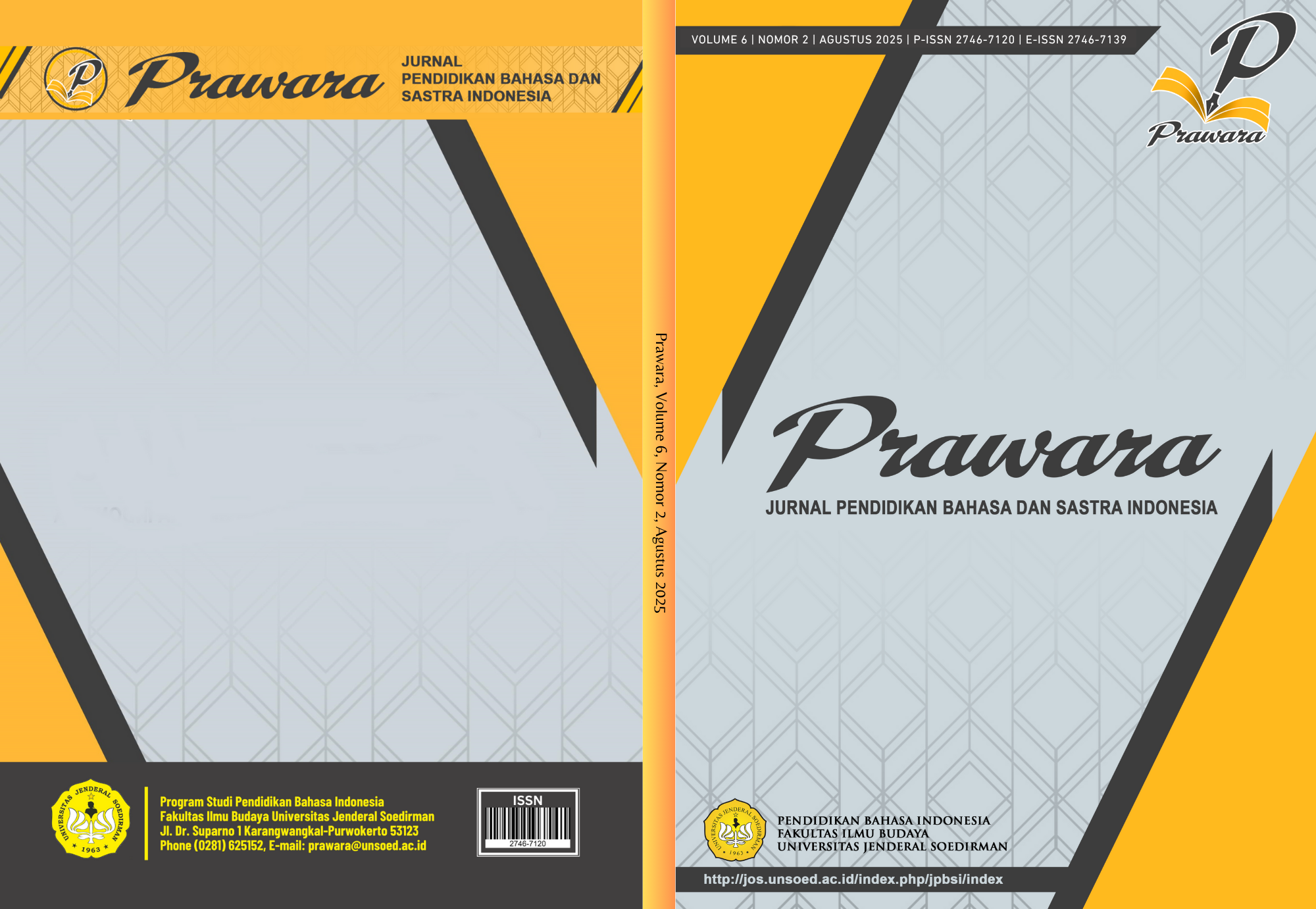Lexicon in Tiktok Live on Thrift Goods
Abstract
The objective of this research is to describe the forms of language variation that emerge in TikTok live broadcasts selling thrifted (second-hand) goods, specifically clothing. This study employs a qualitative descriptive method. The data source comprises several TikTok accounts that specialize in selling thrifted clothes, with the data consisting of utterances from the hosts and comments from consumers. Data was collected using a non-participatory observation method with note-taking techniques. Data analysis was conducted using the contextual method (metode padan), where language phenomena are explained by extralinguistic factors. The results of the analysis are presented informally using plain-word descriptions. The findings show that the language variations can be classified into two main forms: lexicon formation processes and brand name disguise. The lexicon formation processes include vocalic or consonantal modification, reduplication, abbreviation, and affixation. Meanwhile, brand name disguise is achieved through phonological modification and descriptions based on logo association. The emergence of this vocabulary variety serves four main functions: to comply with the platform's code of conduct, to create distinctive forms of expression, as a marketing strategy, and to build buyer commitment.

This work is licensed under a Creative Commons Attribution 4.0 International License.
Authors who publish with Prawara: Jurnal Pendidikan Bahasa dan Sastra Indonesia agree to the following terms:
- Authors retain copyright and grant the journal right of first publication with the work simultaneously licensed under a Creative Commons Attribution License (CC BY) that allows others to share the work with an acknowledgment of the work's authorship and initial publication in this journal.
- Authors are able to enter into separate, additional contractual arrangements for the non-exclusive distribution of the journal's published version of the work (e.g., post it to an institutional repository or publish it in a book), with an acknowledgment of its initial publication in this journal.
- Authors are permitted and encouraged to post their work online (e.g., in institutional repositories or on their website) prior to and during the submission process, as it can lead to productive exchanges, as well as earlier and greater citation of published work.

This work is licensed under CC BY 4.0 .




.png)





 UNIVERSITAS JENDERAL SOEDIRMAN
UNIVERSITAS JENDERAL SOEDIRMAN
